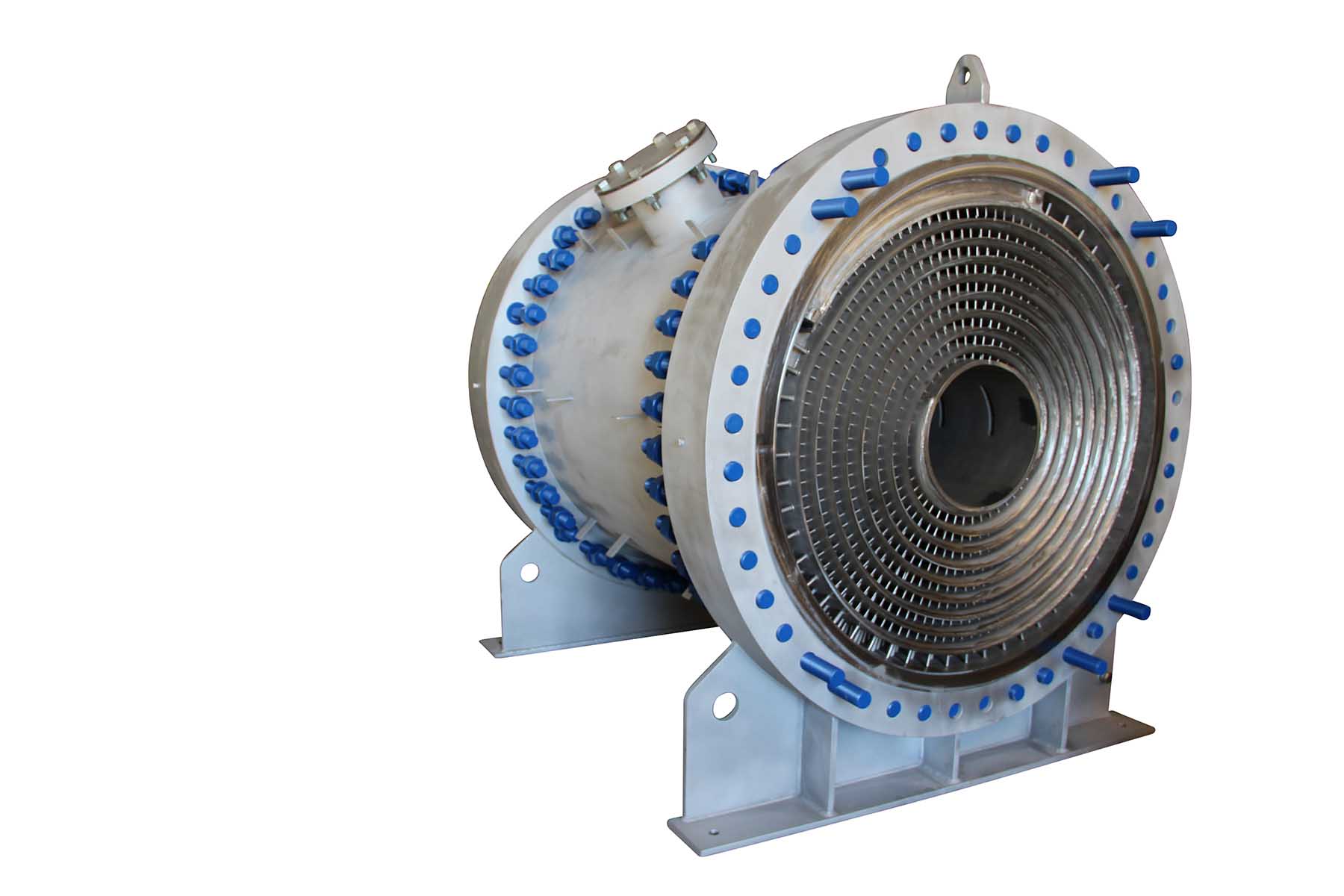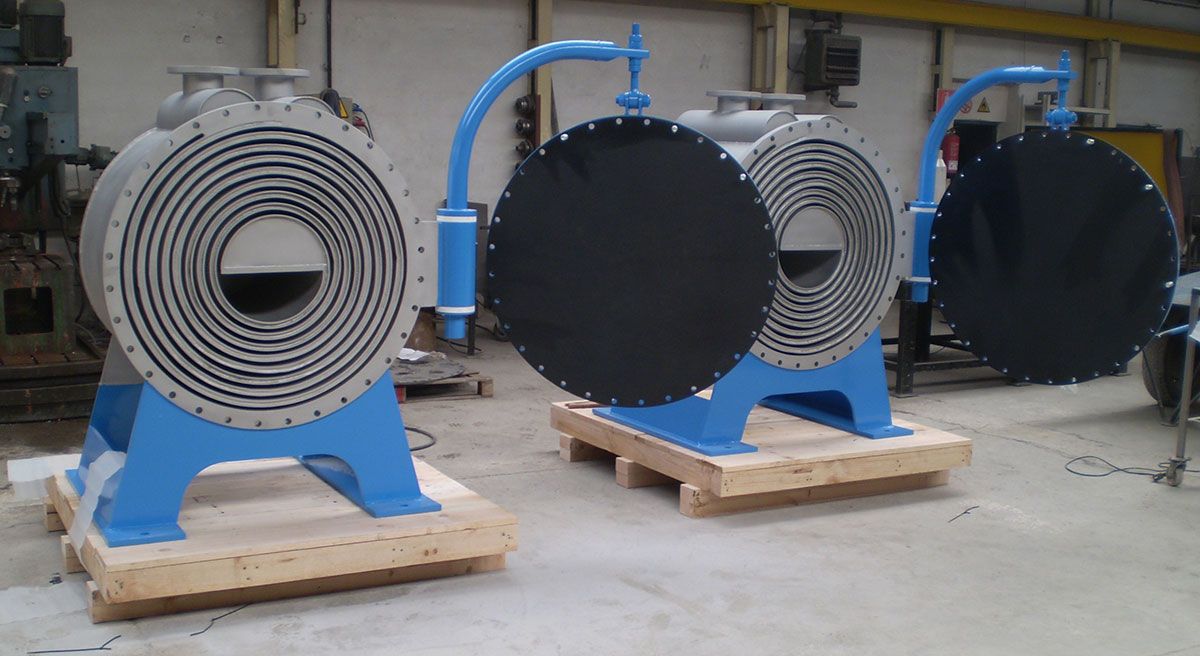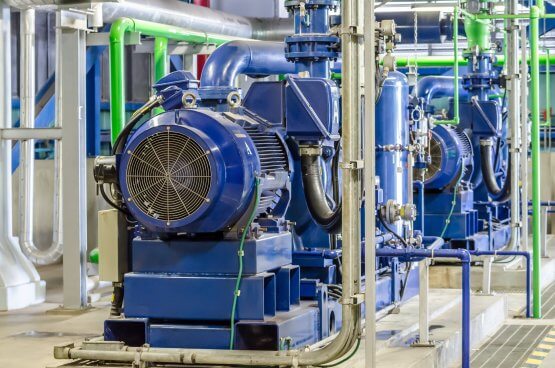Innovative Solutions: How Spiral Heat Exchangers Revolutionize Heat Transfer
In the ever-evolving landscape of industrial processes, the pursuit of efficiency and innovation has driven the development of groundbreaking technologies. Among these advancements, spiral heat exchangers have emerged as a game-changer, offering a unique and innovative approach to heat transfer. These ingenious devices have revolutionized various industries by delivering unparalleled performance, compact design, and unmatched versatility, setting new standards for energy efficiency and operational excellence.
The Spiral Heat Exchanger: A Compact Marvel

Spiral heat exchangers are compact and highly efficient heat transfer devices that feature a unique spiral configuration. Unlike traditional shell-and-tube or plate-and-frame heat exchangers, spiral heat exchangers consist of two concentric spiral channels formed by two metal strips wound together. This innovative design allows for countercurrent flow of hot and cold fluids, maximizing heat transfer while minimizing the overall footprint.
What is the unique design feature that sets spiral heat exchangers apart from traditional heat exchanger types?
The unique design feature that sets spiral heat exchangers apart is their spiral configuration, where two concentric spiral channels are formed by two metal strips wound together, allowing for countercurrent flow of hot and cold fluids.
Principles of Operation and Heat Transfer Mechanisms

The operating principles of spiral heat exchangers are based on the efficient transfer of thermal energy between two fluids flowing in close proximity. As the hot and cold fluids travel through their respective spiral channels, heat is transferred through the separating metal walls via conduction. Additionally, the spiral configuration promotes turbulent flow, enhancing convective heat transfer within each fluid stream.
This combination of conduction and convection mechanisms, coupled with the large surface area-to-volume ratio inherent in the spiral design, results in exceptional heat transfer efficiency. Moreover, the countercurrent flow pattern ensures maximum temperature driving force throughout the length of the exchanger, further optimizing heat transfer performance.
What are the primary heat transfer mechanisms at work in a spiral heat exchanger?
The primary heat transfer mechanisms in a spiral heat exchanger are conduction through the separating metal walls and convection within each fluid stream due to the spiral configuration promoting turbulent flow.
Advantages of Spiral Heat Exchangers

Compact and Space-Saving Design
One of the most significant advantages of spiral heat exchangers is their compact and space-saving design. By utilizing the spiral configuration, these heat exchangers can achieve high heat transfer rates while occupying a minimal footprint. This feature makes them ideal for applications where space is limited, such as offshore platforms, ships, and densely packed industrial facilities.
High Thermal Efficiency
Spiral heat exchangers boast exceptional thermal efficiency due to their large surface area-to-volume ratio and countercurrent flow pattern. This translates into higher heat transfer rates and improved energy efficiency, resulting in reduced operating costs and a lower environmental impact.
Self-Cleaning Capabilities
The spiral configuration and turbulent flow conditions within spiral heat exchangers create a self-cleaning effect, minimizing fouling and scaling issues. This feature reduces the need for frequent cleaning and maintenance, leading to increased uptime and operational reliability.
Versatility and Wide Range of Applications
Spiral heat exchangers can handle a diverse range of fluids, including liquids, gases, and multiphase mixtures, making them suitable for various industries such as chemical processing, petrochemical, food and beverage, pharmaceutical, and power generation, among others.
What are some key advantages of spiral heat exchangers over traditional heat exchanger designs?
Key advantages of spiral heat exchangers include their compact and space-saving design, high thermal efficiency due to their large surface area-to-volume ratio and countercurrent flow pattern, self-cleaning capabilities that minimize fouling and scaling, and versatility in handling diverse fluids across various industries.
Design Considerations and Optimization

Thermal-Hydraulic Modeling and Simulations
To optimize the performance of spiral heat exchangers, engineers rely on advanced thermal-hydraulic modeling and computational fluid dynamics (CFD) simulations. These tools facilitate the analysis of heat transfer coefficients, pressure drops, flow distribution, and temperature profiles, enabling designers to fine-tune parameters such as channel geometries, spiral pitch, and fluid flow rates.
Materials Selection and Corrosion Resistance
The selection of appropriate materials for spiral heat exchangers is critical to ensure long-term performance, durability, and compatibility with the process fluids. Common materials used include stainless steel, nickel alloys, titanium, and specialty alloys tailored to specific application requirements. Corrosion resistance, thermal conductivity, and mechanical strength are key factors considered during the material selection process.
Modular and Customizable Designs
Spiral heat exchangers offer the flexibility of modular and customizable designs, allowing manufacturers to tailor solutions to meet specific process requirements. By varying factors such as the number of spiral channels, channel dimensions, and overall dimensions, engineers can optimize heat transfer performance while accommodating unique installation constraints or process conditions.
What are some key design considerations and optimization techniques employed in the development of spiral heat exchangers?
Key design considerations and optimization techniques for spiral heat exchangers include thermal-hydraulic modeling and CFD simulations to analyze heat transfer coefficients, pressure drops, and flow distributions; materials selection based on corrosion resistance, thermal conductivity, and mechanical strength; and the ability to create modular and customizable designs tailored to specific process requirements.
Applications and Industry Highlights

Chemical and Petrochemical Industries
The chemical and petrochemical industries have been early adopters of spiral heat exchangers, leveraging their exceptional performance and versatility in various processes such as distillation, reactor cooling, and heat recovery. The compact design and self-cleaning capabilities of these heat exchangers have significantly improved operational efficiency and reduced maintenance costs in these demanding environments.
Power Generation and Renewable Energy
Spiral heat exchangers play a crucial role in power generation facilities, particularly in waste heat recovery systems, condensers, and heat recovery steam generators (HRSGs). Their high thermal efficiency and ability to handle various fluid types make them well-suited for applications such as combined cycle power plants and concentrated solar power (CSP) systems.
Food and Beverage Processing
In the food and beverage industry, spiral heat exchangers have gained widespread acceptance due to their hygienic design and ease of cleaning. They are commonly used for pasteurization, sterilization, and cooling processes, ensuring product quality and safety while minimizing the risk of contamination.
HVAC and Refrigeration Systems
The compact nature and high heat transfer rates of spiral heat exchangers have made them attractive for heating, ventilation, air conditioning (HVAC), and refrigeration applications. They can be found in chillers, heat pumps, and evaporative cooling systems, contributing to energy-efficient temperature control and climate management.

Conclusion
Spiral heat exchangers have emerged as a revolutionary innovation in the field of heat transfer, redefining the boundaries of efficiency, compactness, and versatility. Their unique spiral configuration, coupled with advanced design principles and optimization techniques, has unlocked a world of possibilities for industrial processes across diverse sectors. By offering exceptional thermal performance, space-saving designs, and self-cleaning capabilities, spiral heat exchangers and plate and frame heat exchanger have become indispensable assets for manufacturers seeking to optimize energy utilization, reduce operational costs, and minimize environmental impact. As the demand for sustainable and resource-efficient solutions continues to grow, the adoption of spiral heat exchangers is poised to accelerate, driving innovation and shaping the future of heat transfer technologies.
